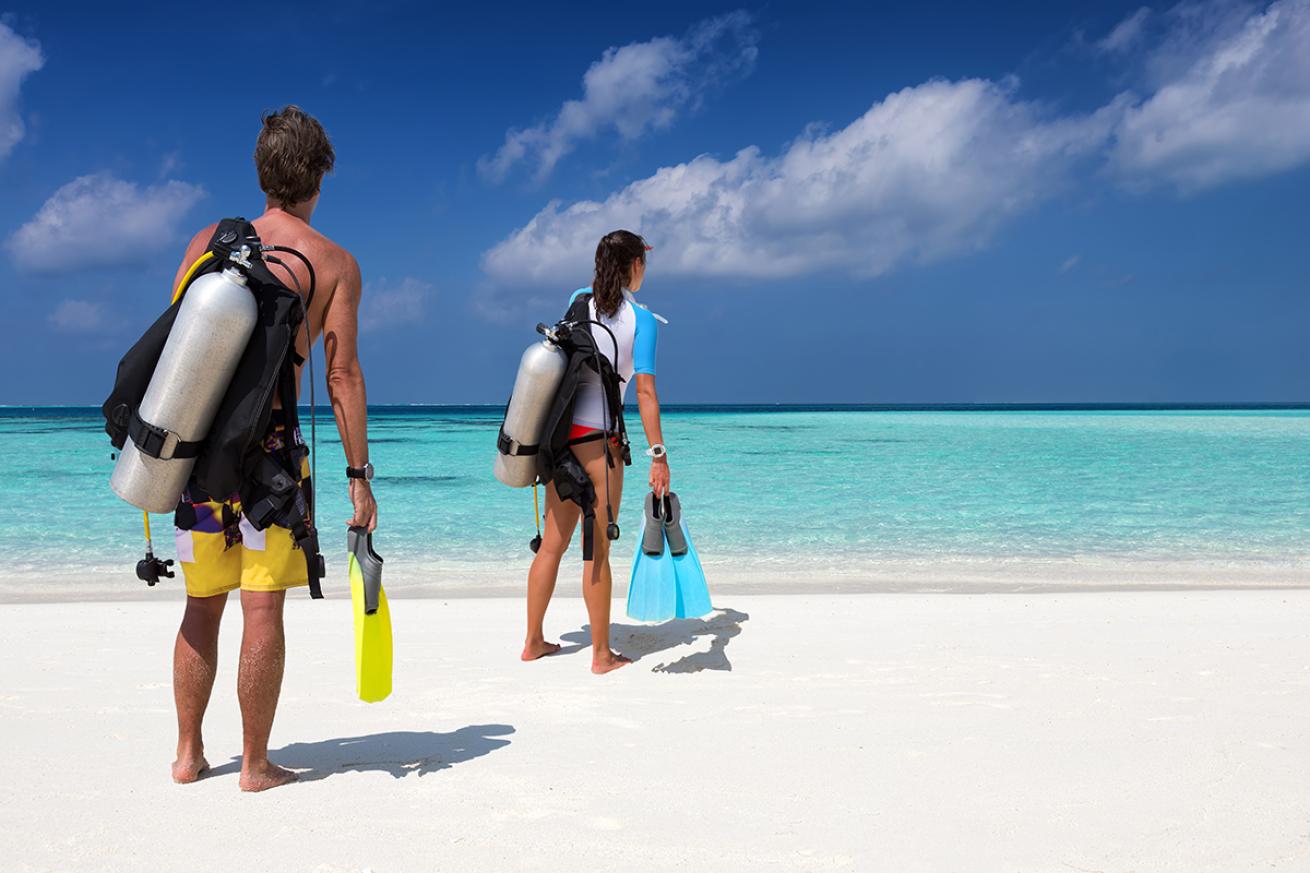Safety Tips for Diving During COVID-19

Shutterstock.com/Sven HanscheMaintaining social distancing while topside will help reduce the risk of transmitting coronavirus when diving.
Scuba divers around the world are eager to get back in the water. As operators reopen globally, PADI is encouraging divers to #DiveLocal.
To help divers prepare for the new reality of diving during COVID-19, PADI and the Divers Alert Network (DAN) each recently issued advice to dive operators on how to safely resume operations.
While this guidance gives divers an inkling of what they can expect when returning to their dive shop—reduced boat capacity, a possible disappearance of communal rinse barrels and simulated air sharing in training courses—the best practices also include ideas for what divers can do to keep the industry healthy and operating.
Please note: While these actions can reduce the likelihood of coronavirus transmission, the risk cannot be entirely eliminated when interacting with other people.
Stay distant at the surface
Stay six feet away from other divers until you are underwater, such as when riding a boat out to the drop, checking your buddy’s kit or renting equipment. This means, for example, you should inspect your buddy’s equipment visually before getting in the water, but not reach out to adjust any of their straps.
Keep at least six feet between you and other divers when in the water as well until you are securely below the surface. Once submerged, “breathing from scuba substantially reduces respiratory transmission concerns,” says PADI in the best practices document posted on the PADI Pros website. “This is obviously important underwater because close contact is important for safety, control, skill conduct and maintaining buddy contact.”
Kit up solo
Putting on all of your equipment by yourself enables social distancing and minimizes the number of people who touch your gear. Sitting on a bench or putting on your BCD once you are in the water will make this easier. It may become a necessary skill—tour operators, usually happy to help you wrangle equipment into place, are being advised not to touch customers or their gear if it can be avoided.
Diving with a member of your household allows more interaction with your buddy, like kitting up or sitting by each other on a boat, as “couples, families and others already socially exposed to each other have more latitude in distancing/contact restrictions,” says PADI on the basis of broadly accepted best practices.
Breathe through regulators in close quarters
Some situations require proximity to other divers when at the surface, like dealing with a panicked diver or doing a tired diver exercise. While a regulator does not protect those around you from your exhalations, warns PADI, breathing through your regulator allows you to pull from your tank air, reducing the chance of inhaling respiratory particles floating around you.
Wash or sanitize hands while topside
“Divers should avoid touching each other's gear, but sometimes it is necessary before, during or after a dive,” says PADI. “The best practice is for divers to wash/sanitize hands before and after touching their own and someone else's gear, meaning before and after the dive in most instances.”
Exercise caution with sanitizer around canister fills
Frequent disinfection of hands and equipment is key to limiting transmission. But DAN warns divers to keep alcohol away from canister fills in order to avoid accidentally igniting a fire.
“Note that alcohol-based hand sanitizers are incompatible with compressed gas,” DAN says in its online FAQ. If you are filling your own tank, “alcohol-based substances should not come into contact with...cylinders and fill whips that are used with any compressed gas but especially oxygen-enriched gas. This would increase the risk of fire and explosion due to the high volatility of alcohol and its ability to ignite at relatively low temperatures.”
Washing hands with soap and water is a far preferable route. If hand sanitizer must be used, DAN urges divers to make sure their hands are “completely dry and all alcohol has evaporated.”
Smear defog, not saliva
Some divers swear spit clears a mask better than any defog. That debate will have to wait. Spitting nearby other people—especially into a rented mask—could increase the risk of transmitting coronavirus. Rely on defog for the foreseeable future to get a clear view underwater.
Watch where you’re pointing that snorkel
Coronavirus can pass through respiratory droplets carried through the air. PADI advises keeping an eye on where the wind is blowing and in what direction other divers are breathing. After surfacing, divers should separate to at least six feet before switching from a regulator to a snorkel, which should only be used when pointed away from other divers. When on a boat, wear a mask over your mouth to mitigate the spread of coronavirus from wind off the water or from the movement of the boat.
Limit trying on rentals
If the operator is properly sanitizing rentals, they should be safe to use. Nothing is foolproof, however, so only try on multiple pieces of rental equipment when strictly necessary. This restricts how much rental equipment you are exposed to, and, respectively, how much equipment you contaminate that could expose other divers.
Dive conservatively
Diving beyond your limits or absentmindedly can cause an emergency. Common emergency procedures, like sharing air or performing CPR, bring divers in close contact and swaps saliva, increasing the chance of transmission. Dive well within your limits to avoid forcing a close encounter.
More Diving During COVID-19:










